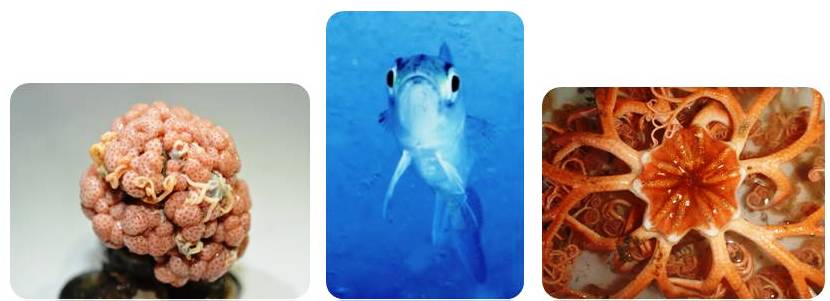Meiofauna are the very small size fraction (less than 500 micrometer) animals living within the sediment. They are difficult to identify and have traditionally often been neglected in Arctic studies. Here we include meiofauna sampling from van Veen grabs and their identification using next generation genetic sequencing. [AMBON scientist: Eric Collins]
Food webs
Lower trophic level food web structure can be used as a metric of functional diversity and resiliency in an ecosystem. In AMBON, food web structure including phytoplankton, zooplankton, benthic invertebrates, and fishes is determined by using stable isotope analysis. We also aim to get a better understanding of the role of microbes within this food web. [AMBON scientists: Katrin Iken, Bodil Bluhm; research associate: Ann-Christine Zinkann]
Epifauna
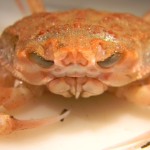 Epifauna refers to the animals living on top of the seafloor and some of them can have large size and many can be highly mobile. Typical representatives of the epifauna are echinoderms, gastropods and many decapod crustaceans (shrimp and crabs). Epifauna often has a strong relationship with the sediment characteristics, with more sessile, suspension-feeding taxa in regions with coarse substrate and high flow regimes and deposit-feeding taxa associated with low-flow, depositional regions. Epifauna diversity, biomass and abundance in AMBON is sampled from the beam trawls also used for fish sampling. [AMBON scientists: Katrin Iken, Bodil Bluhm]
Epifauna refers to the animals living on top of the seafloor and some of them can have large size and many can be highly mobile. Typical representatives of the epifauna are echinoderms, gastropods and many decapod crustaceans (shrimp and crabs). Epifauna often has a strong relationship with the sediment characteristics, with more sessile, suspension-feeding taxa in regions with coarse substrate and high flow regimes and deposit-feeding taxa associated with low-flow, depositional regions. Epifauna diversity, biomass and abundance in AMBON is sampled from the beam trawls also used for fish sampling. [AMBON scientists: Katrin Iken, Bodil Bluhm]
Macrofauna
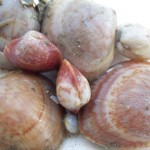 Macrofauna refers to the benthic animals that mostly live within the sediment. These include many bivalves and polychaete worms, among a whole host of other taxa. The mostly relatively immobile macrofauna is very closely linked to the primary production in the overlying water column and can be an excellent integrator of changes in the productivity regime in certain regions. The AMBON station coverage includes a region in the southern Chukchi Sea termed a “benthic hotspot” because of the very large amounts of bivalves found there. Macrofauna in AMBON will be collected from van Veen grabs. [AMBON scientist: Jacqueline Grebmeier]
Macrofauna refers to the benthic animals that mostly live within the sediment. These include many bivalves and polychaete worms, among a whole host of other taxa. The mostly relatively immobile macrofauna is very closely linked to the primary production in the overlying water column and can be an excellent integrator of changes in the productivity regime in certain regions. The AMBON station coverage includes a region in the southern Chukchi Sea termed a “benthic hotspot” because of the very large amounts of bivalves found there. Macrofauna in AMBON will be collected from van Veen grabs. [AMBON scientist: Jacqueline Grebmeier]
Marine mammals
 Marine mammals include a variety of seals, walrus and whales. All have great cultural relevance and are important feeders in the ecosystem, either in the pelagic system or the benthic system. Marine mammals are identified and enumerated by ship-board observations during appropriate sea states. Sightings are immediately recorded using GPS-interfaced computer software. [AMBON scientists: Kate Stafford, Sue Moore]
Marine mammals include a variety of seals, walrus and whales. All have great cultural relevance and are important feeders in the ecosystem, either in the pelagic system or the benthic system. Marine mammals are identified and enumerated by ship-board observations during appropriate sea states. Sightings are immediately recorded using GPS-interfaced computer software. [AMBON scientists: Kate Stafford, Sue Moore]
Seabirds
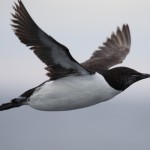 Seabirds use the Chukchi Sea environment in multiple ways, either temporarily during the summer or others year-round. They are important feeders of zooplankton and fishes, and in some species even benthic invertebrates. Several species also are of cultural relevance to the local communities living along the northern coast of Alaska. The transient nature of many seabirds requires a lot of effort and skill to observe them from the ship and sightings are immediately recorded using GPS-interfaced computer software. [AMBON scientist: Kathy Kuletz; research associate Dan Cushing]
Seabirds use the Chukchi Sea environment in multiple ways, either temporarily during the summer or others year-round. They are important feeders of zooplankton and fishes, and in some species even benthic invertebrates. Several species also are of cultural relevance to the local communities living along the northern coast of Alaska. The transient nature of many seabirds requires a lot of effort and skill to observe them from the ship and sightings are immediately recorded using GPS-interfaced computer software. [AMBON scientist: Kathy Kuletz; research associate Dan Cushing]
Fish
 Fish are typically small in the Chukchi Sea, but diversity and abundance can be high and they play important roles in linking lower trophic levels to seabirds and some mammals. Fish are collected in AMBON with a plump-staff beam trawl and identified and measured on board. Juvenile and pelagic fishes are captured with a midwater trawl. [AMBON scientist: Franz Mueter; research associate: Lorena Edenfield]
Fish are typically small in the Chukchi Sea, but diversity and abundance can be high and they play important roles in linking lower trophic levels to seabirds and some mammals. Fish are collected in AMBON with a plump-staff beam trawl and identified and measured on board. Juvenile and pelagic fishes are captured with a midwater trawl. [AMBON scientist: Franz Mueter; research associate: Lorena Edenfield]
Zooplankton
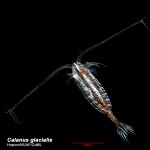 Zooplankton are the key link between primary production and many other trophic levels. Their incredible numbers and their ability to store large amounts of lipids make them an essential food source for many pelagic-feeding fishes, birds and mammals. Zooplankton in AMBON will be caught with traditional plankton nets and taxonomically identified. [AMBON scientist: Russ Hopcroft]
Zooplankton are the key link between primary production and many other trophic levels. Their incredible numbers and their ability to store large amounts of lipids make them an essential food source for many pelagic-feeding fishes, birds and mammals. Zooplankton in AMBON will be caught with traditional plankton nets and taxonomically identified. [AMBON scientist: Russ Hopcroft]
Phytoplankton
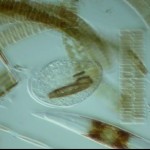 Phytoplankton are one of the major primary producers in the open marine system and their diversity determines much of the primary production in a region. Their diversity also is intricately linked with the physical and chemical water properties. Phytoplankton diversity in AMBON will be determined taxonomically from water samples taken from the CTD rosette casts. [AMBON scientist: Jacqueline Grebmeier]
Phytoplankton are one of the major primary producers in the open marine system and their diversity determines much of the primary production in a region. Their diversity also is intricately linked with the physical and chemical water properties. Phytoplankton diversity in AMBON will be determined taxonomically from water samples taken from the CTD rosette casts. [AMBON scientist: Jacqueline Grebmeier]
Microbes
Microbes in the water column and sediment are an essential key component responsible for a large variety of ecosystem functions, and they also likely are among the first responders to climate forcing or anthropogenic influences. However, their diversity is extremely difficult to fully capture with traditional morphological techniques but the rapid advances in next generation sequencing offers a feasible approach now and will be pursued during AMBON. [AMBON scientist: Eric Collins]

